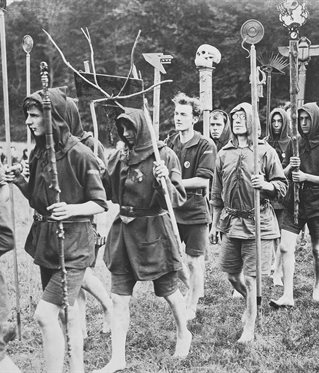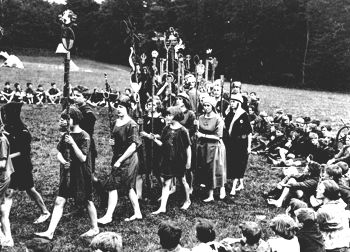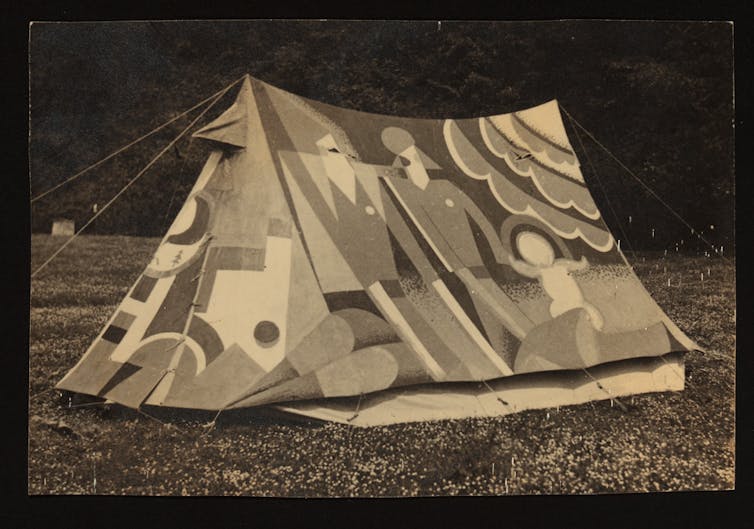Reference




OpenAI's Answer
The Kibbo Kift movement, originally founded in 1920 by John Hargrave, evolved from a woodcraft-based group to a more militaristic organization over time. Initially, Kibbo Kift was formed as a reaction against the perceived militaristic nature of the Boy Scouts and emphasized woodcraft, artistic expression, and self-development through outdoor experiences and rituals source.
The shift towards a militaristic focus occurred during the 1930s when the Kibbo Kift's symbolic and artistic costumes began to be replaced by more uniform attire, dubbed the "Green Shirt." They adopted a disciplined paramilitary approach, complete with marching, drums, and banners. This transformation coincided with their advocacy of Social Credit, an economic theory primarily developed by C.H. Douglas, which sought to address economic injustices source.
This change was influenced by Hargrave's vision of addressing the economic and social challenges of the time, reflecting both a response to economic conditions and wider political movements of that era, leading them to function as a "people's army" by the commencement of World War II source.

These images depict the transformation and activities during the later, more militaristic phase of the Kibbo Kift movement.
Follow Up
Related
What are the main differences between The 25th Ward and its predecessor The Silver Case?
Repositioning for the future: African hand-washing innovation Shesha Geza streamlines its strategi
What are the key focus areas during the Advent season according to the text?
What new focus did Cinema Research Corporation adopt in the 1990s?
What is the difference between recursos and medio in didactic?